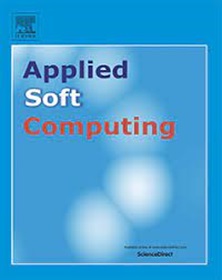利用可穿戴生理信号的多视角融合信息和迁移学习进行个性化血压估测
IF 6.6
1区 计算机科学
Q1 COMPUTER SCIENCE, ARTIFICIAL INTELLIGENCE
引用次数: 0
摘要
连续血压(BP)监测对个人健康管理至关重要,但患者个体间的显著差异给实现精准医疗带来了挑战。针对这一问题,我们提出了一种并行交叉混合架构,它集成了卷积神经网络骨干网和混合变换器骨干网。该模型以多视角生理信号和个性化微调策略为基础,旨在估算血压,便于捕捉不同感受野的生理信息,增强网络的表达能力。我们提出的架构在估计收缩压和舒张压方面表现出卓越的性能,平均绝对误差分别为 3.94 毫米汞柱和 2.24 毫米汞柱。这些结果超越了现有的基线模型,符合英国高血压学会、医疗仪器促进协会和电气与电子工程师学会制定的血压测量标准。此外,本研究还探索了一种个性化模型微调策略,即通过调整特定层并结合个人信息,提出最佳解决方案。该模型的泛化能力通过跨数据库(公共数据库和自建数据库)的迁移学习得到了验证。为了提高拟议架构在可穿戴设备中的可用性,本研究采用了知识提炼策略来实现模型轻量化,并在我们设计的实时血压估算系统中进行了初步应用。本研究为个性化血压估算提供了高效、准确的解决方案,具有广泛的应用潜力。本文章由计算机程序翻译,如有差异,请以英文原文为准。
Personalized blood pressure estimation using multiview fusion information of wearable physiological signals and transfer learning
Continuous blood pressure (BP) monitoring is crucial for individual health management, yet the significant inter-individual variations among patients pose challenges to achieving precision medicine. In response to this issue, we propose a parallel cross-hybrid architecture that integrates a convolutional neural network backbone and a Mix-Transformer backbone. This model, grounded in multi-view physiological signals and personalized fine-tuning strategies, aims to estimate BP, facilitating the capture of physiological information across diverse receptive fields and enhancing network expressive capabilities. Our proposed architecture exhibits superior performance in estimating systolic blood pressure and diastolic blood pressure, with average absolute errors of 3.94 mmHg and 2.24 mmHg, respectively. These results surpass existing baseline models and align with the standards set by the British Hypertension Society, the Association for the Advancement of Medical Instrumentation, and the Institute of Electrical and Electronics Engineers for BP measurement. Additionally, this study explores a personalized model fine-tuning strategy by adjusting specific layers and incorporating individual information, presenting an optimal solution. The model's generalization ability is validated through transfer learning across databases (public and self-made). To enhance the proposed architecture's usability in wearable devices, this study employs a knowledge distillation strategy for model lightweighting, with preliminary application in our designed real-time BP estimation system. This study provides an efficient and accurate solution for personalized BP estimation, exhibiting broad potential applications.
求助全文
通过发布文献求助,成功后即可免费获取论文全文。
去求助
来源期刊

Applied Soft Computing
工程技术-计算机:跨学科应用
CiteScore
15.80
自引率
6.90%
发文量
874
审稿时长
10.9 months
期刊介绍:
Applied Soft Computing is an international journal promoting an integrated view of soft computing to solve real life problems.The focus is to publish the highest quality research in application and convergence of the areas of Fuzzy Logic, Neural Networks, Evolutionary Computing, Rough Sets and other similar techniques to address real world complexities.
Applied Soft Computing is a rolling publication: articles are published as soon as the editor-in-chief has accepted them. Therefore, the web site will continuously be updated with new articles and the publication time will be short.
 求助内容:
求助内容: 应助结果提醒方式:
应助结果提醒方式:


